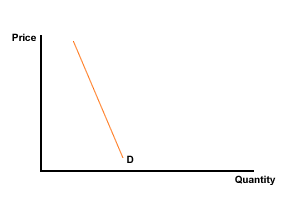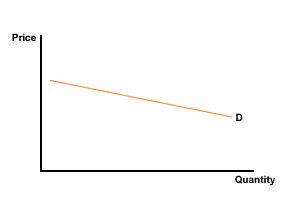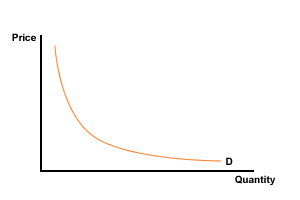Elasticity

Elasticity is a measure of how sensitive demand is to a change in something that affects it.
You can think of the relationship in terms of the dependent and the independent value.
The DEMAND for a product is the dependent variable, as it is the variable being influenced. It can be influenced by a number of different or independent variables such as:
- Price
- Income
- Advertising
- The prices of other substitute or complementary goods
The dependent variable (the factor being influenced) - in this case, demand - is always placed on the top of the equation as it is being influenced and the independent variable (the factor causing the change in demand) is placed on the bottom of the equation.

We will be start by looking at price elasticity of demand with a definition:

Price elasticity of demand
Price elasticity of demand is a measure of the sensitivity of the demand for a product to changes in its own price. In other words, it is a measure of how much demand for a good or service responds to a change in its price.
Price elasticity of demand is calculated and defined as:
![]()
The following 'aide memoire' may be of use. You usually put your dinner (demand) on your plate (price). Demand is over price, D over P!

Price and demand are usually in inverse relationship. In other words, as price falls, demand increases; and as price increases, demand falls. The result of any calculation of price elasticity normally results in a negative elasticity. In practice, the negative sign is usually excluded.
The value of the elasticity ranges from zero to infinity, and is given different names over different numerical ranges. The table below gives all these possibilities.
| Value | Description | Explanation |
|---|---|---|
| O | PERFECTLY INELASTIC | Price has no effect on demand at all |
| Under 1 | INELASTIC | Price has a small effect on demand. The % change in price is larger than the % change in demand |
| Exactly 1 | UNITARY | % Change in price and % change in demand are the same. Remember, though, the signs are different. |
| Over 1 | ELASTIC | Demand is very sensitive to price. The % change in price is less than the % change in demand. |
| Infinity | PERFECTLY ELASTIC | Any increase in price kills demand. |
It is usual to represent the degree of elasticity graphically. The common shapes for demand curves and their elasticity values are given in the diagrams below.

Figure 1 Inelastic demand curve

Figure 2 Elastic demand curve
The special shape that represents a price elasticity of 1 is known as a rectangular hyperbola! This is shown below.

Figure 3 Unit elastic demand curve
Price elasticity of a good or service depends on a range of factors:
- The number of close substitutes in the market. The more substitutes available the greater the elasticity.
- Is the product a luxury or a necessity? Luxuries are more elastic than necessities.
- Amount of income spent on the product. Cheap items tend to be inelastic.
- Is the product habit forming? If so demand will become price inelastic.
- The stage of the product life cycle.

You will be expected to:
- calculate elasticity.
- interpret elasticities.
- explain the relationship between elasticities and the product life cycle.
- analyse the relationship between elasticity and sales revenue.